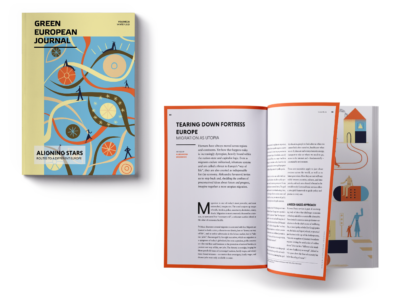Aspiration meets realism in Albania, where eventual EU accession requires renewed political direction able to retain the country’s youth.
Three decades ago, Albanian students throughout the country took to the streets in massive protests for freedom and democracy, chanting, “We want Albania to be like the rest of Europe.” Still today, more than 90 per cent of Albanians see EU membership as a firm objective and vivid destination.
For Albanians, the route to EU citizenship is first and foremost a state of mind. It reinforces their freedom to move, speak up, and pursue an alternative way of life, which, until the late 1980s, had been strictly prohibited under 50 years of dictatorial isolation. Membership is also seen as the opportunity to identify with and join a community following democratic values and principles, completing a long and painful transition from authoritarian rule to democracy.
Albania is one of the exceptional cases where Euro-Atlantic integration has never been contested, either at a societal level or among its political elites. However, with not enough wind in the sails, the dream is yet to turn into reality.
Pervasive corruption and a political class focused on personal interests, constantly undermining the reform agenda, are major hindrances to EU integration. The recent EU-backed judicial reform in Albania is, however, considered a potential turning point for its European prospects. Either the country will manage to succeed in eradicating existing wrongdoings in preparation for EU membership, or public trust in ever acceding will crumble.
Nevertheless, Albanian citizens are fully aware that they will not join the Union by 2030. The prime minister has reiterated on different occasions that accession is more distant and does not solely rely on the country’s efforts. As time passes, the younger generation is becoming increasingly disillusioned. Influenced by social media and driven by their energy, ambition, and impatience, young people are choosing to leave the country in search of better prospects in EU member states. Today’s migration primarily concerns the middle class, whose access to quality education develops their knowledge of technical skills and foreign languages. Albania’s youth resemble the country’s wild Vjosa river crossing the country, seeking alternative flows to Europeanise immediately instead of waiting patiently for Europe to come to them.
According to Eurostat, more than half a million Albanians have received an EU member state passport since 2002, of which 49 per cent hold Italian citizenship. In the past 15 years, almost 0.76 million Albanians have received a residence permit for an EU country. These figures are alarming given that Albania’s population is only 2.8 million. But should the glass be seen as half full rather than half empty, this figure is also promising: the ongoing Europeanisation of emigrant communities abroad might both exert a spill-over effect on the national political elites and improve Albania’s image abroad.
Over the last two years, Albania has witnessed the emergence of new political movements led by young, well-educated leaders who were born towards the end of communism. The rise of this new elite is seen as a first step towards changing the political status quo, which is responsible for failures to modernise and challenges to society’s trust in state institutions. Overcoming widespread disenchantment and depopulation, as well as advancing towards membership within a reasonable timeframe, rest on these emerging leaders.
Today, Albania’s future in the EU is not seen as a merely technical negotiation process. It is rather considered as a renewed political commitment to citizens aimed at strengthening the democratisation process and the rule of law, not least by convincing Albania’s youth to remain and contribute to the prosperity of their country.

